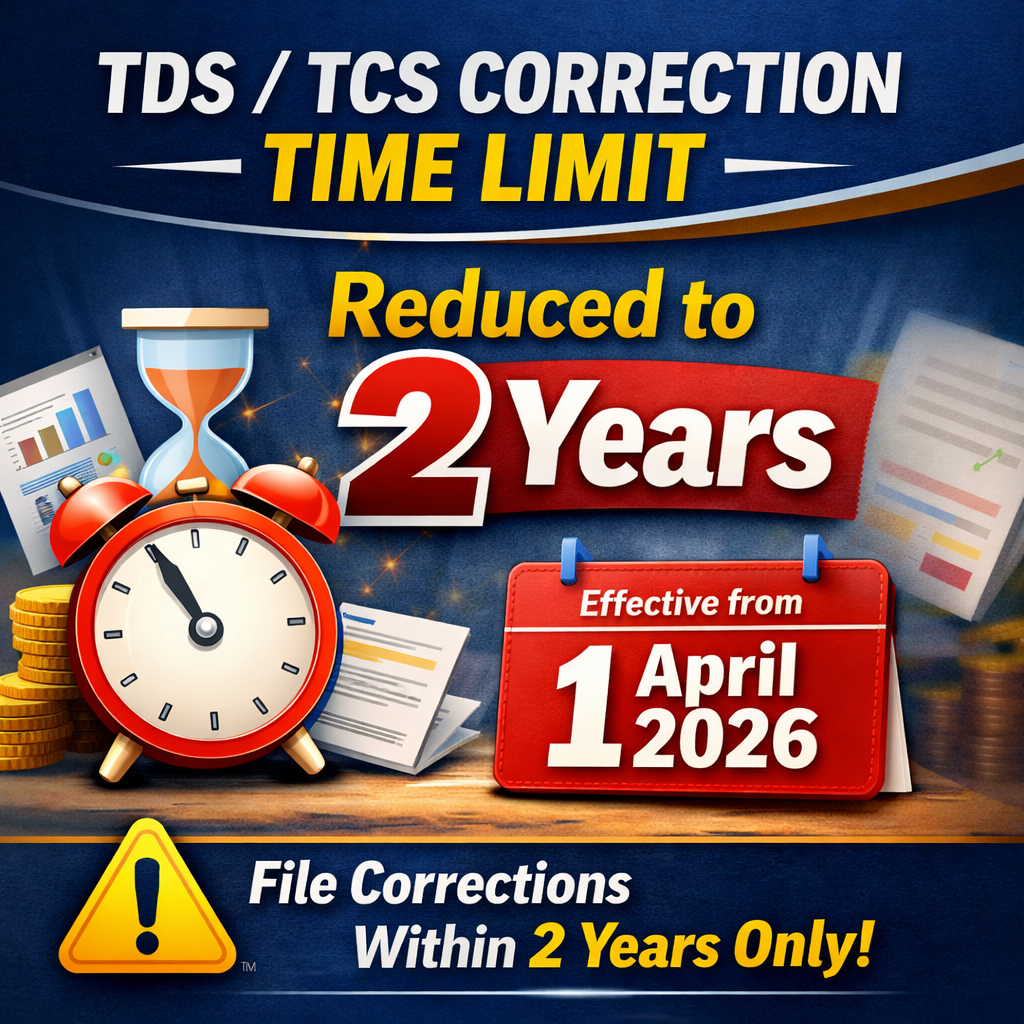Senior Citizens Get Special Tax Advantages in 2026
Senior Citizens in India: Comprehensive Tax & Financial Benefits Guide 2026
The Government of India acknowledges the lifelong contribution of senior citizens and, in return, extends a broad set of tax concessions, exemptions, compliance relaxations, banking advantages, and lifestyle-related benefits to ensure financial stability and dignity during retirement.
This detailed guide explains 30+ benefits and features available to senior and super senior citizens in India for FY 2025–26 / AY 2026–27.
1. Definition of Senior Citizen Under Income Tax Law
As per the Income Tax Act:
-
Senior Citizen: Resident individual aged 60 years or more but below 80 years
-
Super Senior Citizen: Resident individual aged 80 years or above
-
Specified Senior Citizen (Section 194P): Resident aged 75 years or above, earning only pension and interest from the same bank, and eligible for exemption from filing ITR
2. Income Tax Slabs – New Tax Regime (FY 2025–26)
The New Tax Regime, which is now the default option, applies equally to all taxpayers, including senior citizens:
| Total Income | Tax Rate |
|---|---|
| Up to ₹4,00,000 | Nil |
| ₹4,00,001 – ₹8,00,000 | 5% |
| ₹8,00,001 – ₹12,00,000 | 10% |
| ₹12,00,001 – ₹16,00,000 | 15% |
| ₹16,00,001 – ₹20,00,000 | 20% |
| ₹20,00,001 – ₹24,00,000 | 25% |
| Above ₹24,00,000 | 30% |
Taxpayers may still opt for the old tax regime if it offers better savings.
3. Zero Tax on Income Up to ₹12.75 Lakh – Major Relief
Under the New Regime:
-
Standard deduction on salary/pension: ₹75,000
-
Taxable income up to ₹12,00,000
-
Section 87A rebate applicable
As a result, a senior citizen earning up to ₹12.75 lakh from pension/salary pays zero income tax, making the new regime highly beneficial for retirees.
4. Higher Basic Exemption Under Old Tax Regime
Those opting for the old regime enjoy enhanced exemption limits:
| Category | Exemption Limit |
|---|---|
| General taxpayer | ₹2,50,000 |
| Senior Citizen (60–79 years) | ₹3,00,000 |
| Super Senior Citizen (80+ years) | ₹5,00,000 |
5. Section 80TTB – Deduction on Interest Income
Senior citizens can claim a deduction up to ₹50,000 on interest earned from:
-
Savings bank accounts
-
Fixed & recurring deposits
-
Post office schemes
-
Co-operative bank deposits
This benefit is exclusive to senior citizens and replaces Section 80TTA.
6. Section 80D – Health Insurance & Medical Expenses
To reduce healthcare costs, senior citizens are eligible for:
-
₹50,000 deduction for health insurance premium
-
Medical expenses allowed if insurance is not taken
-
Additional deduction for premiums paid for dependent parents
7. Section 80DDB – Deduction for Specified Diseases
For treatment of serious ailments such as cancer, kidney failure, Parkinson’s disease, etc., senior citizens can claim:
-
Deduction up to ₹1,00,000, subject to conditions and certification
8. No Advance Tax Liability (Section 207)
Senior citizens are not required to pay advance tax if:
-
They do not have business income, and
-
Their income consists only of pension and interest
This also protects them from interest under Sections 234B and 234C.
9. Relaxations in ITR Filing
Offline ITR Filing
Super senior citizens may file paper returns (ITR-1 or ITR-4) instead of mandatory e-filing.
Section 194P – ITR Filing Exemption
Eligible residents aged 75+ earning only pension and bank interest are not required to file ITR, as the bank computes and deducts tax.
10. TDS Benefits & Form 15H
-
Form 15H can be submitted to avoid TDS if total tax liability is nil
-
TDS threshold on interest income increased to ₹1,00,000 per year
-
No TDS on bank/post office interest up to this limit
11. Enhanced Family Pension Exemption
Under the new regime:
-
Exemption increased to ₹25,000 per year
-
Allowed as lower of one-third of pension or ₹25,000
12. LTCG Benefits on Equity Investments
Senior citizens enjoy:
-
Basic exemption adjustment up to ₹4,00,000
-
Additional ₹1,50,000 LTCG exemption
-
Effectively, LTCG up to ₹1.5 lakh can be tax-free
13. Reverse Mortgage – Capital Gains Exemption
Amounts received through reverse mortgage of a residential property:
-
Are not treated as transfer
-
Hence, no capital gains tax applies
14. Higher Interest Rates on Senior Citizen FDs
Banks generally offer:
-
Additional 0.50% interest for senior citizens
-
Up to 0.75% extra for super senior citizens
15. Senior Citizen Savings Scheme (SCSS)
Key features:
-
Eligibility: Age 60+
-
Maximum investment: ₹30 lakh
-
Quarterly interest payout (rate as notified)
-
Eligible for Section 80C deduction
-
Backed by Government of India
16. Other Social, Banking & Lifestyle Benefits
Senior citizens also enjoy several non-tax advantages, including:
-
Railway & state transport concessions
-
Airline fare discounts
-
Healthcare priority & hospital rebates
-
Enhanced Ayushman Bharat coverage
-
Doorstep banking services (age 70+)
-
Property tax & stamp duty rebates (state-wise)
-
Telecom concessions
-
State-sponsored old-age pension schemes
Conclusion
For FY 2026, senior citizens in India benefit from a strong combination of:
✔ Lower tax burden
✔ Simplified compliance
✔ Higher exemptions and deductions
✔ Secure investment options
✔ Banking and lifestyle privileges
These measures collectively aim to ensure financial independence, stability, and improved quality of life after retirement.






